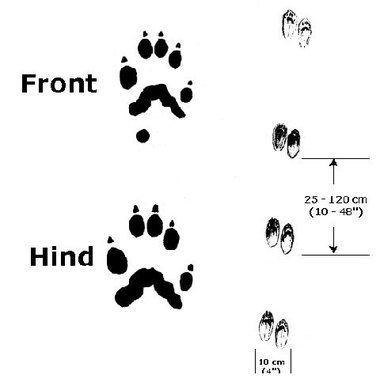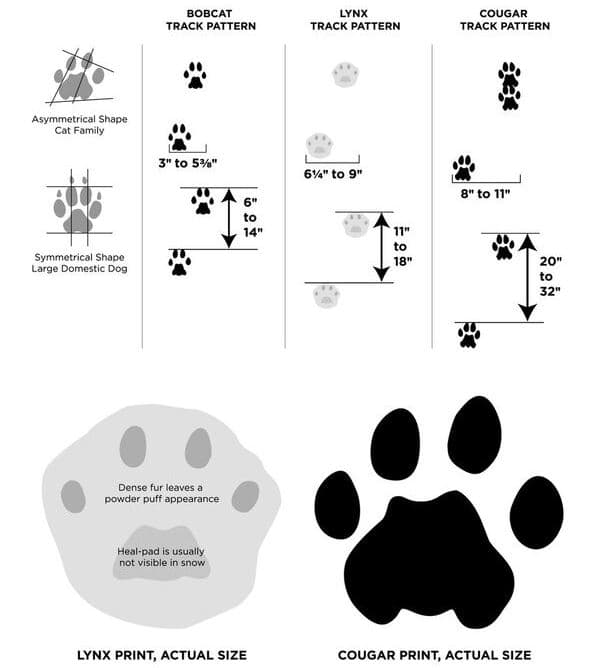So then I had to look up my new tracking book - that I got for FREE at the environmental recycling center free book library.... and turns out that a Lynx has two lobes on the back of the back foot and the Bobcat has THREE lobes on the back of the back foot. Oops - I didn't get a chance to read that book ahead of time and didn't think I would really "need it."
Almost one-quarter of the Lynx sightings in Minnesota are in the county were the land was - but they are mainly to the EAST of where I am at. So.... who knows? It could have been a lynx but probably was a bobcat....
Now I know - look at the number of "lobes" on the back of the hind foot track!! Pretty cool.
At least I know that a big cat got a BIG meal in my mini-forest.... How cool is that? Awesome!!
Big cats gotta eat too (and those chipmunks did think they OWNED the forest). haha.
Maybe it was a cougar?
What's their track look like....
The track LOOKED like that bobcat track to be sure - it was "round" and 4 in the front.... So I immediately thought BIG CAT - because it climbed the tree obviously...
Could have been a Lynx!!
St. Louis - 113
the MOST sightings of any county!!
So before I saw an American Marten on my land - just a flash of it - and didn't know what it was. Till I found the TAIL - and it was very soft fur. I saved it... and was able to ID it....
So the track was DEFINITELY NOT an American Marten...
So just as I suspected - it DEFINITELY was not a dog nor a coyote (and do they really climb trees to hunt?) Nah...
But it could have been a cougar!!
WOW the tracks were TOO BIG to be a bobcat. There's no way they were that small....they were definitely more like 4 inches wide....
OK how big is a lynx track?
I think it was a LYNX!!! Because Lynx are actually more common than cougars in northern minnesota....
Canada Lynx vid on study of this very elusive cat
But, as hares begin to starve and their numbers decline, lynx focus their attention on the now-abundant grouse, resulting in a drop of both predator and prey populations, completing the cycle.There's both grouse and hare in my mini-forest....https://wildearthguardians.org/brave-new-wild/wildlife/victory-for-canada-lynx/
These pelts and animal parts are used in places including Russia and China for products like fur coats, which can require 50 bobcat pelts each. But the effects of this export program aren’t limited to bobcats: lynx are commonly caught in traps set for bobcats.I had two good "subconscious" EcoEcho music experiences - I heard this tune in my head. No lyrics - just the tune. Then when I consciously noticed the tune - then I remembered the lyrics. Then I smiled at my subconscious being revealed to me. the first was: Walking in a Winter Wonderland. And when the day warmed up - the tune was Good Day Sunshine.
The Service issued a statement that specified how its export program affected lynx, as well as measures that would minimize its impact and how the Service would implement those measures. But the Service’s activities did not comply with this statement, a violation of the Endangered Species Act. The court’s message to the Service is loud and clear: the Service must take a more active role in preventing Canada lynx from being killed by trappers.
We know Lynx eat squirrel but no mention of chipmunk that I can find.
In Colorado the red squirrel is an important secondary food source when snowshoe hares are scarce.... when the lynx population goes up, the population of its prey declines. They also eat beavers, chipmunks, squirrels, muskrats, mice, foxes, and grouse and other birds. http://m.espacepourlavie.ca/en/biodome-fauna/canada-lynx








No comments:
Post a Comment